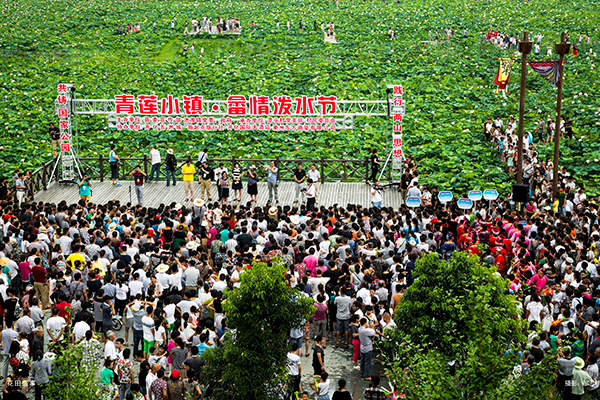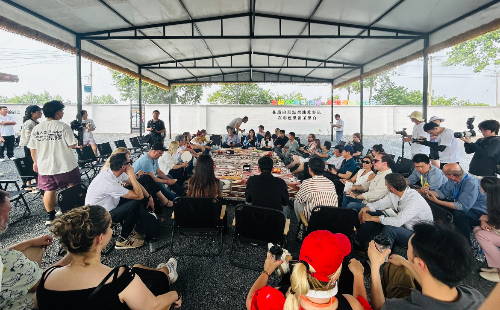Cultural auditoriums helping to revitalize village economies

Rural residents gather outside the cultural auditorium of Tantou village in Kaihua county, Zhejiang province. [Photo provided to China Daily]
"The Yueju Opera troupe is coming!" It is the big news of the day for the residents of Yangjia, East China's Zhejiang province. They can barely contain their excitement and keep announcing the news to everyone they meet. Since the village has constructed a cultural auditorium, operas, performances and movies have become the obvious delight of its residents.
"I am a Yueju Opera lover, and I cannot wait to see it! " says Pan Hengyong, a resident of Yangjia, who arrives at the auditorium half an hour before the opera to make sure he secures a good viewing spot. People from nearby villages also join the crowd.
"Thanks to the cultural auditorium," says Pan, "I find my life enriched."
Since 2013, over 10,000 cultural auditoriums have been built in rural Zhejiang. Most of the auditoriums have exhibition halls, reading rooms and convenience service centers; some even have digital theaters. Rural residents enjoy the shows presented in the auditorium, learn the history of the village through exhibitions, hold activities to celebrate festivals in the centers, or simply enjoy using the auditorium as a social space.
"The construction of the cultural auditorium is an innovative way to revive the rural areas of Zhejiang," says Yang Guiqing, professor of urban planning at Tongji University.
Seeking cultural roots
The construction of such auditoriums is part of the rural revitalization strategy launched by the provincial government in 2013. Emphasizing the distinctiveness of village cultures, the project seeks to showcase and preserve the traditional cultures of Zhejiang's villages.
The auditoriums are vastly different across villages. With themes that range from farming culture to canal culture, the auditoriums feature the natural and historical endowment of the place in which they are located.
Villages in Xinchang county in Shaoxing have built auditoriums that serve as a poetry workshop, because the county has historically inspired many ancient poets-1,505 poems by 451 poets were written in the area.
The auditorium in Yucai village in Haiyan county features "wood culture", exhibiting a collection of more than 20 kinds of wooden utensils commonly seen in the region south of the Yangtze River.
Xinjie village in Huangyan has opened a "ferry memorial hall" in its auditorium. It recreated an indoor ferry to commemorate the village's more than 300-year history in the field.
For places that are endowed with fewer historical resources, the cultural auditoriums are often built on plots that used to host local ancestral shrines. In South China, where ancestral veneration is a common practice, the sites that worship ancestors are sought out, preserved, and renovated to host the new auditoriums.
"The cultural auditorium is an important material carrier in reviving rural culture," says Yang. "It fully excavates, refines and displays the outstanding traditional cultural resources of the countryside. Through the contemporary cultural and artistic forms combined with the expressions of local characteristics, it creates a cultural atmosphere in which the villagers love and can actively participate in, thus establishing the culture of the village."





 play
play